Army Outlines Futures Command; Org Chart In Flux
Posted on
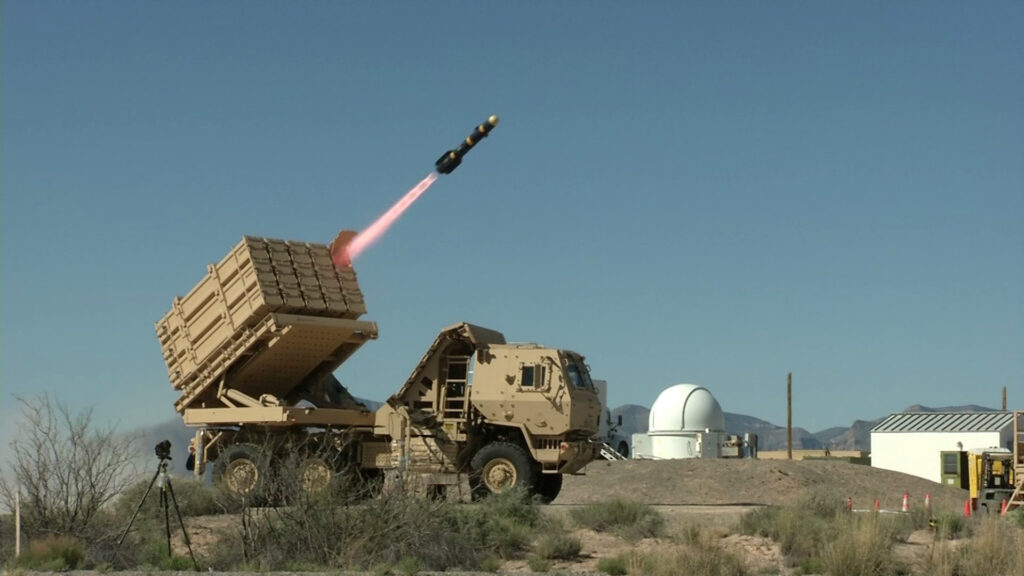
Army Multi-Mission Launcher (MML) test-fires a Longbow Hellfire.
AUSA GLOBAL FORCE SYMPOSIUM: Army Futures Command is meant to unify modernization efforts now scattered across the bureaucracy. But to create the new command, the Army must rip some existing organizations apart. The Army’s challenge is to close more gaps than they create. In the Army’s biggest reorganization since the 1970s, AFC will take over
- unspecified elements of Army Test & Evaluation Command (ATEC),
- Research & Development Command (RDECOM) from Army Materiel Command (AMC), and
- at least parts of Army Capability Integration Center (ARCIC) from Training & Doctrine Command (TRADOC).
(We first reported this would probably be the structure back in October, but the Army has finally confirmed it).
The command’s location and leader are still being chosen.
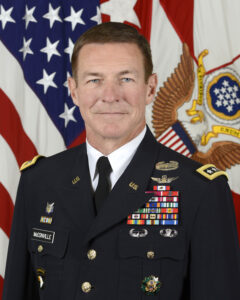
Gen. James McConville
By law, the Army’s Program Managers and Program Executive Officers will continue to report to the civilian Assistant Secretary for Acquisition, Logistics, & Technology, the ASA(ALT) — but they will be “matrixed” with a secondary dashed-line reporting relationship to Futures Command.
The rest of AMC will continue to develop and sustain the Army’s equipment, while the rest of TRADOC will continue to train and educate the Army’s personnel. (The Army’s third major command, Forces Command or FORSCOM, oversees training and readiness of entire units). But all technologies and concepts beyond the current Five-Year Defense Plan (FYDP), aka the Program Objective Memorandum (POM), will be the responsibility of Army Futures Command.
The division is deliberate. Because TRADOC, AMC, and FORSCOM must keep today’s Army ready above all else, Army leaders argue it’s all too easy for them to neglect long-term thinking about the future, especially when the Army is at war as it has been since 9/11.
“That’s precisely why we need the Futures Command,” the Vice Chief of Staff of the Army, Gen. James McConville, told the AUSA conference here in Huntsville, Ala. “We look at FORSCOM to field the present force, we look at AMC to sustain the present force, and we look at TRADOC to basically recruit and train the present force…. It’s very easy to get dragged into that.” By institutionally separating readiness for today from modernization for tomorrow, the Army hopes to ensure the urgent demands of the present don’t drown out the needs of the future.
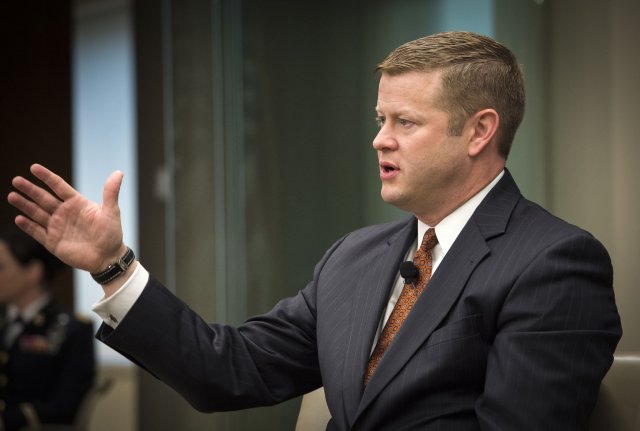
Ryan McCarthy
Splitting Up TRADOC
There are two ways of planning for the future, Gen. McConville told reporters. One is to start from the present, with what you have now, and then build incrementally from there: This will be TRADOC’s job. But the other approach is to start from the future, imagining the world you want and then working backward to figure out what it would take to get there: This approach is much more likely to produce revolutionary change, and it’s the one Army Futures Command will adopt.
Ideally, in theory, the commands will meet in the middle with a seamless handoff. Innovative concepts from Futures Command will become TRADOC doctrine, field manuals, and training programs. Experiments, tech demonstrations, and prototypes run by Futures Command will become development, production, and sustainment efforts in AMC and the program offices.
But the danger is that, as the Army tries to knit together a seamless modernization process, it’ll rip open as many seams as it closes. While RDECOM will basically just start reporting to Futures Command instead of AMC, what happens to ARCIC is “a little bit more complex,” Army undersecretary Ryan McCarthy told reporters. “There’s the near future and then there’s the deep… we’ll break that apart by the FYDP.”
ARCIC employees won’t have to move, but the organization will change (and perhaps split) around them. “Individuals are going to stay right stay where they are,” McCarthy said, “but they’re going to have to be very patient as we go through this process to see how they break apart the tasks.”
An additional complication is that ARCIC doesn’t line up neatly with the proposed internal organization within Army Futures Command, either. Under Secretary McCarthy outlined three functional divisions:
- Futures & Concepts will assess “needs and opportunities” based on the threat and technology;
- Combat Development will develop concepts and formal requirements documents; and
- Combat Systems will “refine, engineer, and produce” new systems.
How specific organizations will map to these three functions is unclear.
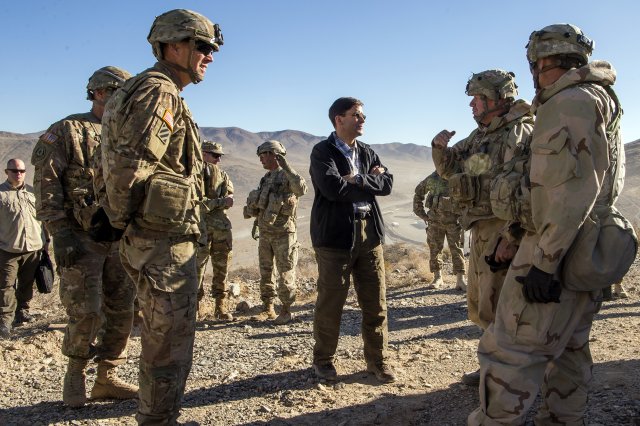
Army Secretary Mark Esper speaks to soldiers at the National Training Center on Fort Irwin, California
Big Unknowns
Futures Command will also incorporate the eight existing Cross Functional Teams created last fall to work on top Army modernization priorities. Each CFT combines combat veterans, scientists and technologists, concepts and requirements developers, and acquisition experts. But their authority is limited to experiments, technology demonstrations, and prototypes, with actual development and production programs still in the hands of the program managers. (In Pentagonese, the CFT is responsible for everything up to a Materiel Development Decision or MDD; the program managers for everything after). It’s not clear exactly how the CFTs, or for that matter the program managers, will fit into the new command.
So while the Cross Functional Teams are funding prototype weapons, “the CFTs in and of themselves are prototypes” for future Army organizations, said the artillery CFT chief, Brig. Gen. Steve Maranian. “We are not in the final form that we will be. We don’t know what that final form’s going to be.”
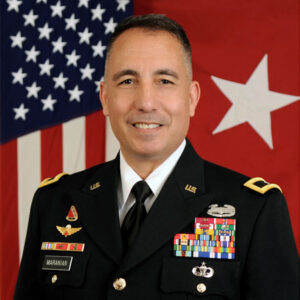
Brig. Gen. Stephen Maranian
In fact, how Army Futures Command as a whole will be organized is still in flux — and it will likely remain so well after it formally stands up this summer. There is no tidy organizational chart, and Army leaders claim they don’t want one yet.
“If you start a process with an org chart, you’re toast,” McCarthy said. “Focus on what you want to achieve.” Army Futures Command will reach Initial Operational Capability this summer but the service will take feedback, learn lessons, and refine the organization until next year, when the command reaches Full Operational Capability and they “lock it down.”
“One of the things we’re trying to caution everyone, to include our own staff, is…what we think AFC will look like today (is) different from what it is three months from now and then three years from now,” Army Secretary Mark Esper told reporters. “We’ve got to be flexible enough to adapt it, which means adding things, taking things away.”
That said, Esper emphasized, the Army is very clear about what it wants from the new command. “The current acquisition system has pieces all throughout the Army,” he said. “There’s chunks of it in TRADOC and chunks of it in AMC and then other pieces. So really all we’re trying to do is get them all lined up under a single command…..from concept, S&T, RDT&E, through the requirements process, through the beginnings of the acquisition system — Milestone A, B, and C — ….aligned under that same commander.”
“We will finally achieve… unity of command,” Esper said.
Subscribe to our newsletter
Promotions, new products and sales. Directly to your inbox.
